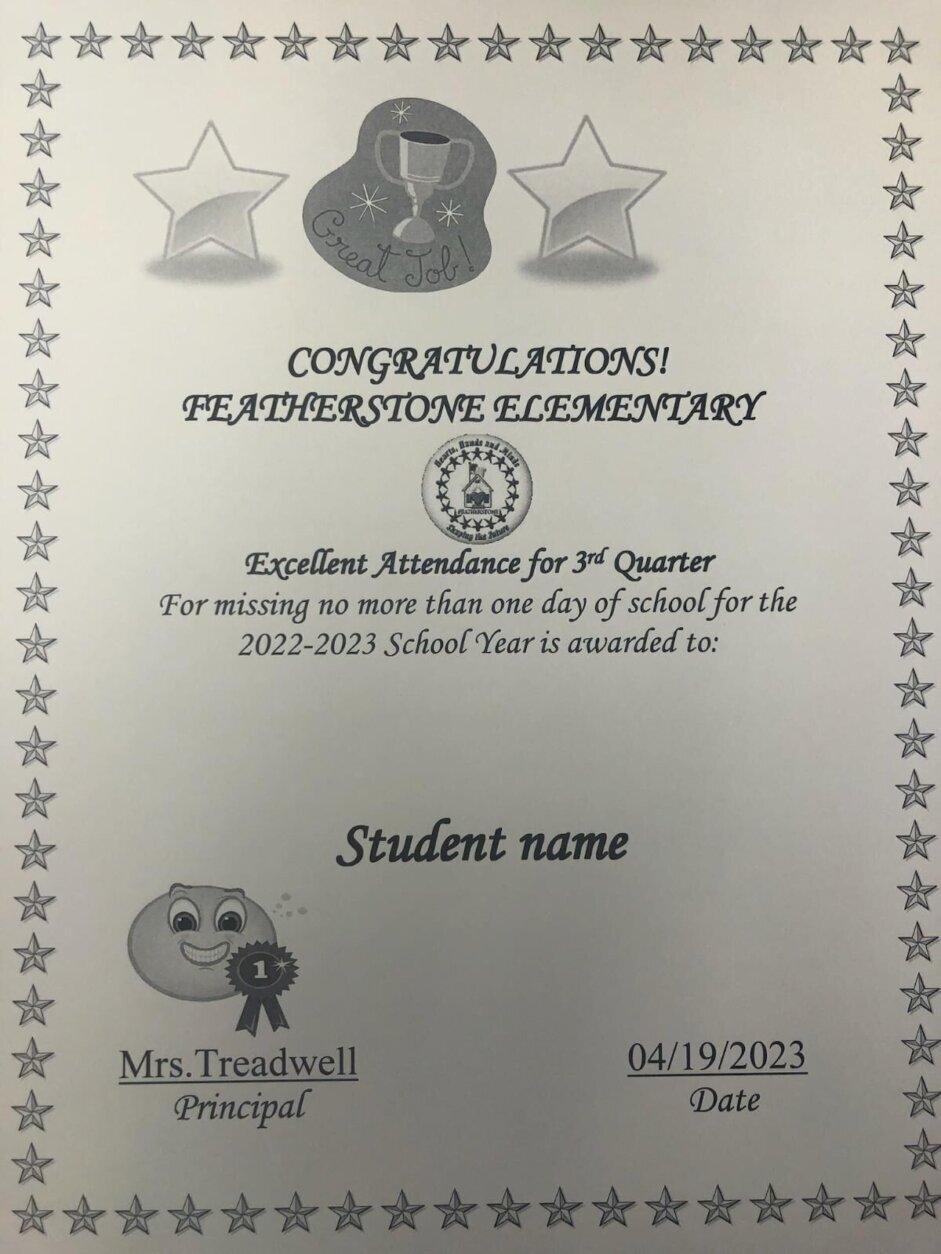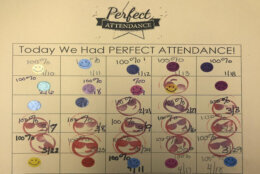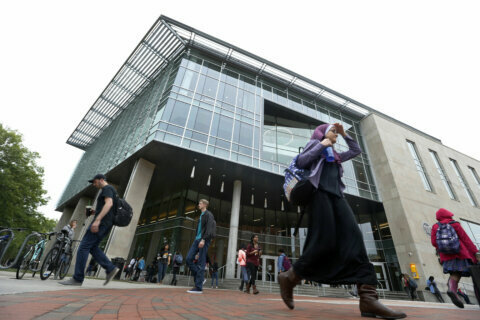



On a recent morning at Featherstone Elementary in Prince William County, Virginia, Assistant Principal Christopher McManus was in an art class when a student walked in late.
The student was over an hour late to school, and when she entered, two other students glanced at each other, ecstatic at the realization that the class now had perfect attendance. The students, McManus said, know that if they do earn perfect attendance, they’ll be rewarded with a prize.
Featherstone has taken a unique approach to combating a rise in chronic absenteeism — defined as when students miss 10% or more of a school year. The school hosts attendance challenges among classes and grade levels, and has communicated with parents about the importance of kids being in school, Principal Christina Treadwell said.
It has proven to be effective, as Treadwell said the school’s absenteeism rate sits at 6% this school year, down from last year, when the school sat anywhere from 17% to 22%, she said.
“We’ve noticed in conversations that we’ve had with parents that they don’t quite understand what (chronic absenteeism) is,” Treadwell said. “A lot of parents think that when they bring a doctor’s note in, that erases the absence and they’re back at zero. That’s, in fact, not what it is.”
When school started in the fall, school leaders established an attendance team, which includes Treadwell, McManus, the school counselor, an office assistant and the parent liaison. The group meets regularly to determine which students are absent the most and how to communicate with parents.
So far this year, the school has hosted several attendance challenges, aimed at keeping students excited about coming to school during weeks that they may be absent. There was one organized before winter break, and one right after, “because we know that those are the times when a lot of students either leave early to go on vacation or come back late from a vacation,” Treadwell said.
The school places attendance charts outside of its classrooms, and if every student is at school, they get a sticker on their chart. When the whole chart gets filled out, students get a prize, which ranges from a shoutout during announcements, ice cream, Goldfish, Oreos and fruit snacks, among others.
That challenge “is effective, because students start to hold each other accountable for being at school,” McManus said.
“We’ve seen students whose parents pull them out of school for a doctor’s appointment, and then the student will tell their parent, ‘I want to go back to school,'” he said.
In those cases, McManus said, students get credit for initiating the process of returning to school.
The school, which Treadwell said has about 500 students, also hosts an assembly every quarter, to give students certificates for perfect attendance.
The competition reaches teachers, too. Treadwell has a tool that tracks attendance data and shares some of it with teachers every week. Teachers, she said, “want to have the best attendance per grade level, so they work with students as well to make sure their percentages are going down.”
In addition to making attendance competitive, Treadwell said school leaders routinely talk to parents about the importance of good attendance. Some parents have sent the school letters detailing plans for a weekslong vacation, and after Treadwell describes the impact missing that much school could have, “I’ve had parents either cancel those trips or not buy tickets to go on those trips,” she said.
“Having that one-on-one conversation with a parent is crucial to making sure that the chronic absenteeism rate drops,” Treadwell said.
Treadwell has been asked to present some of the strategies the school has used to combat the rise in absenteeism and has had staff from one school observe her team during one of its attendance meetings.
“The vision is to get every student to graduate on time,” she said. “We tell parents that chronic absenteeism is one of the key factors at predicting student drop out or students not graduating.”








